Welcome to This Date in Aviation History, getting of you caught up on milestones, important historical events and people in aviation from August 8 through August 11.
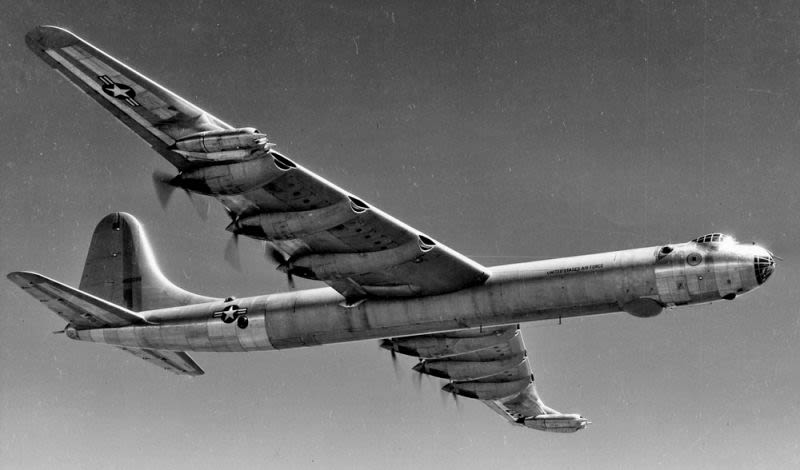
August 8, 1946 – The first flight of the Convair B-36 Peacemaker. On the night of August 24–25, 1914, eight bombs fell from a Zeppelin over the city of Antwerp, Belgium. These were followed by British raids against a Zeppelin factory in Cologne. World War I had given birth not only to the idea of aerial bombardment, but also the concept of strategic bombing. As the world hurtled toward WWII in the 1930s, the theories of Italian general Guilio Douhet, who espoused large scale bombing of factories and cities to cripple a county’s means of waging war and to destroy the nation’s morale to keep fighting, became more widely read. These precepts were later championed by American general William “Billy” Mitchell, the man who is seen today as the father of the US Air Force. As war approached, the US began to develop its own heavy bombers, and honed the practice of strategic bombing over four years of war. Bombers such as the Boeing B-17 Flying Fortress, Consolidated B-24 Liberator, and Boeing B-29 Superfortress became icons of the US bombing campaigns. The arrival of the atomic bomb that brought an end to WWII meant that entire cities could be destroyed by just one bomber rather than a thousand, and the massive B-36 Peacemaker became the ultimate implementation of WWII-era strategic bombing doctrine.
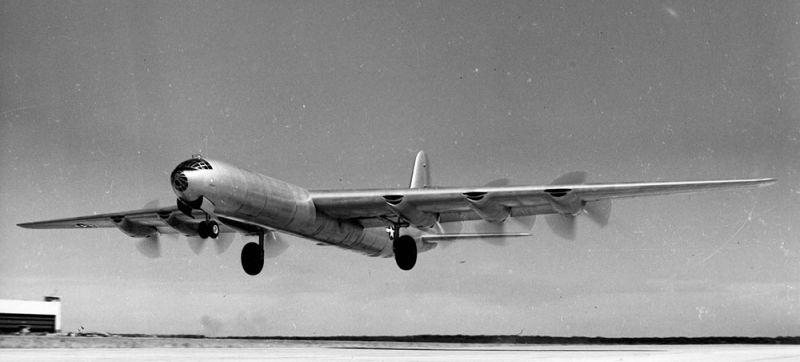
Though the Peacemaker became a symbol of Cold War nuclear deterrence, its development actually began two months before the US entered the war. As the German Wehrmacht swept across Europe following the invasion of Poland in 1939, the situation looked increasingly grim for England. Though the US had not yet entered the war, it was clear to American war planners that, should England and North Africa fall to the Nazis, there would be no base from which to launch bombing missions against Germany and occupied Europe. The only alternative would be to fly from bases in North America, and any bomber operating from the US or Canada would need an unrefueled range of nearly 6,000 miles. In light of that eventuality, the B-36 was actually designed in 1941, and Convair told the Army they would have two flying prototypes by 1943. But Convair was so busy building the B-24 Liberator and developing the B-32 Dominator, much more traditional bombers, that the B-36 was placed on the back burner and wasn’t pursued in earnest until the end of the war. By that time, the Peacemaker’s mission had changed from an ultra-long range conventional bomber to an ultra-long range nuclear bomber. While a huge piston-powered bomber seemed somewhat of an anachronism at the dawn of the jet age, no other aircraft had the range necessary for such deep strikes, as early jet engines were notoriously thirsty and had a limited combat radius.

The B-36 was the largest mass-produced piston-powered aircraft ever built, dwarfing the B-29. At 230 feet, its wingspan was greater than any combat aircraft ever produced. Initially, the somewhat ironically named Peacemaker was powered by six massive Pratt & Whitney R-4360 Wasp Major 28-cylinder radial engines in a pusher configuration, the same engines that powered the Boeing B-50 Superfortress and a host of other large American warplanes. Later, four General Electric J47 turbojets were added to augment takeoff power and increase speed during bombing runs. The Peacemaker’s four bomb bays could carry up to 86,000 pounds of bombs, more than ten times the load carried by the Boeing B-17 Flying Fortress. It was also the only bomber capable of delivering the 43,600-pound T-12 Cloudmaker “earthquake bomb.” The B-36's nuclear capabilities were equally formidable, with the capability to carry the Mark-17 hydrogen bomb, the biggest and heaviest nuclear bomb ever produced. For defense, the B-36 had six retractable, remote-controlled turrets each armed with a pair of 20 mm cannons.
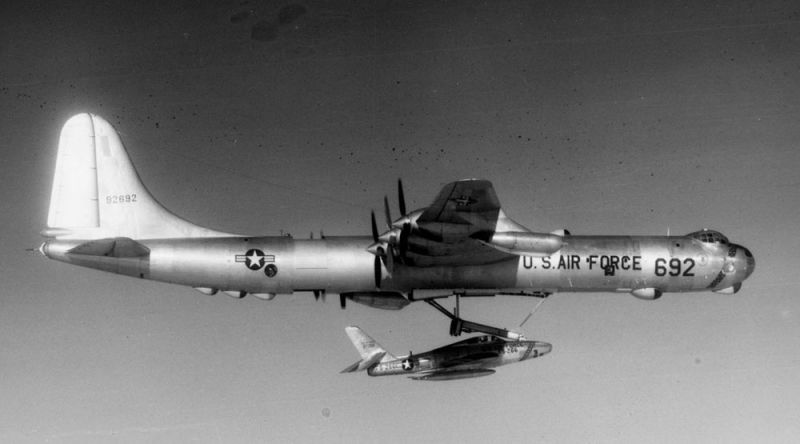
The Peacemaker entered service with the Strategic Air Command in 1948 and began its role as a nuclear deterrent, while the RB-36 reconnaissance variant was flown on spying missions around the periphery of the Soviet Union and its client states. Despite being designed as a weapon of war, no B-36 ever dropped nuclear or conventional bombs on an enemy. The B-36 served as an important test bed, and was modified to carry a nuclear reactor to investigate nuclear powered flight. It was also modified into the enormous XC-99 strategic airlifter.
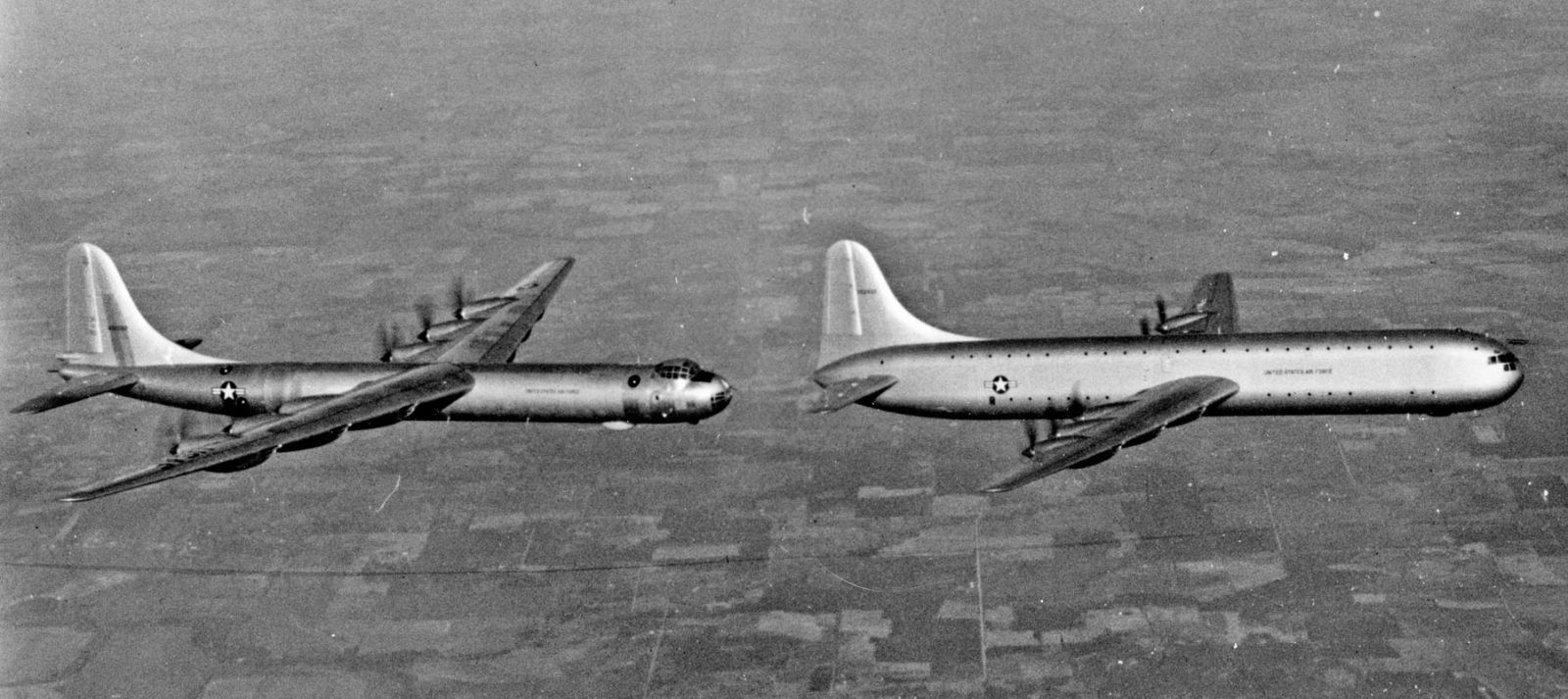
Due to its vulnerability to Russian jet fighters and its lack of inflight refueling capability, the Peacemaker’s service life was a relatively short 10 years. The mammoth bomber gave way to modern jet bombers such as the Boeing B-47 Stratojet and B-52 Stratofortress and, of the 384 Peacemakers built, only four remain on display.
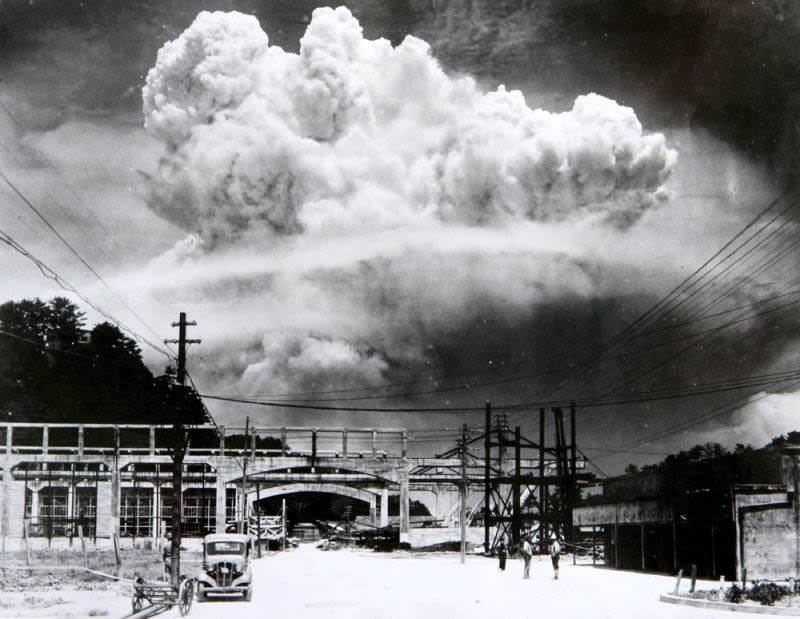
August 9, 1945 – The United states drops the Fat Man atomic bomb on the Japanese city of Nagasaki. As WWII in the Pacific dragged on through 1945, the Allies were increasingly concerned that an invasion of the Japanese homeland would be the only way to bring an end to the war. But the expected fanatical resistance of the Japanese people meant that such an invasion would likely lead to an enormous loss of life, and the Allies hoped that dropping a nuclear bomb on Japan would bring about an end to the conflict and avoid a costly invasion. Following the horrific atomic bombing of Hiroshima on August 6, the Japanese government showed no sign that they were willing to do capitulate, even in the face of such devastating weaponry. In fact, Japanese military leaders started making preparations for martial law that would prevent any Japanese from trying to make peace with the Allies. Following a dire warning from President Truman that more attacks would be forthcoming if the Japanese refused to surrender unconditionally, the president made good on his word and decided to continue the nuclear bombardment until Japan yielded.
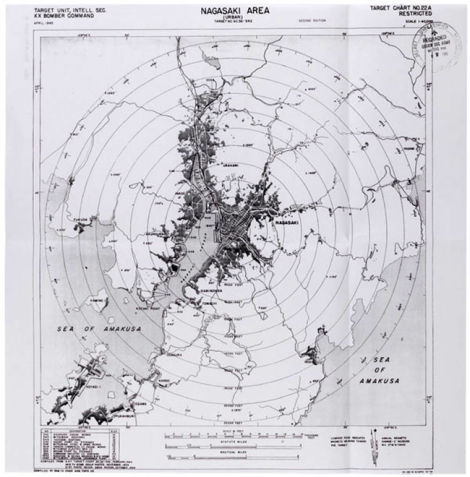
The next mission after Hiroshima was originally slated for August 11, but predictions of poor weather over the target areas pushed the date up to August 9. The designated target for the bombing was the city of Kokura, the secondary target to Hiroshima on August 6. Kokura was home to the biggest arms factory in Japan. Like Hiroshima, the had been spared from conventional and firebombing raids because the Allies wanted to measure the true effects of the atomic bomb. The mission was carried out by another specially modified Silverplate Boeing B-29 Superfortress named Bockscar after its regular commander, Capt. Frederick Bock. But Bock was not on the pilot rotation for the mission and the aircraft was instead commanded by Maj. Charles Sweeney, who had accompanied the Enola Gay on the Hiroshima mission flying another B-29 named The Great Artiste. Capt. Bock instead piloted The Great Artiste and carried scientific instruments to measure the blast.
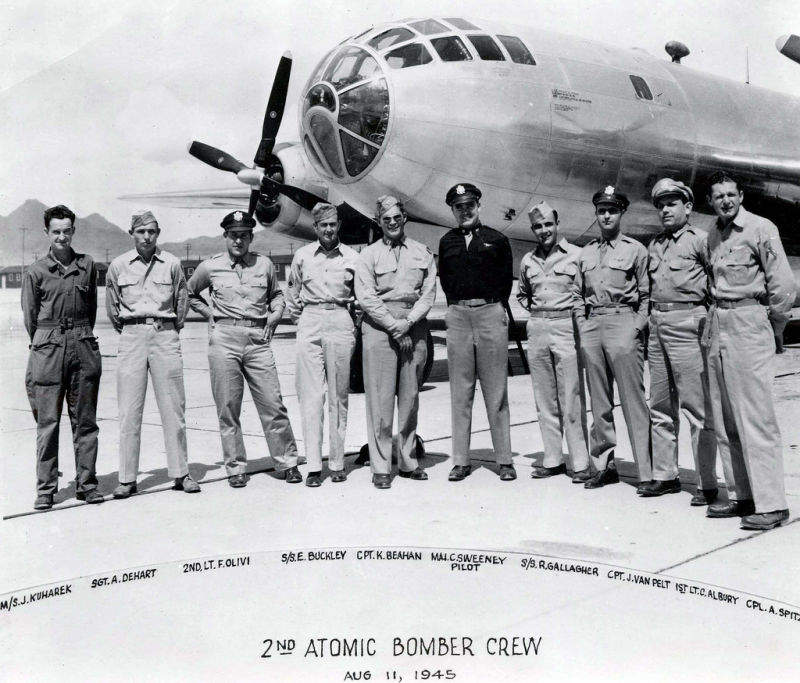
At 3:49 am on August 9, Sweeney and his crew departed Tinian, but when they arrived over Kokura they found that smoke from the firebombing of the nearby city of Yahata obscured their view. Sweeney was under orders to drop the bomb visually rather than by radar, so he elected to divert to Nagasaki, their backup target. During the war, Nagasaki was one of Japan’s largest seaports. It housed critical industries for the production of ordnance and shipping, and was home to the Mitsubishi Shipyard. Unlike Hiroshima, which had more concrete buildings, Nagasaki had many more buildings of traditional wood construction. At the time of the bombing, there were an estimated 263,000 people in the city, of which only 9,000 were Japanese soldiers. The rest were civilians, along with 2,500 conscripted Korean workers and 400 Allied POWs.
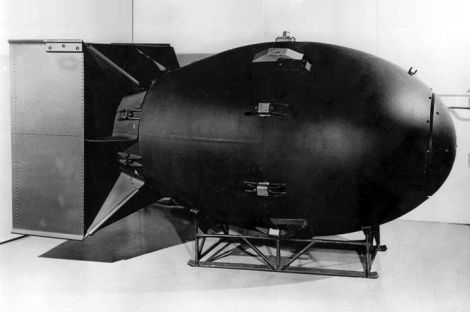
The bomb chosen for the mission was codenamed Fat Man (officially Mark III), an implosion-type nuclear bomb with a solid plutonium core. When it detonated over Nagasaki, the blast from Fat Man was greater than 21,000 tons of TNT, and anywhere from 40,000 to 70,000 inhabitants were killed in the initial explosion and resulting fires. Only 400 people in underground shelters survived. The city of Nagasaki is nestled between mountains, and had the topography not contained the explosion, the death toll could have been considerably higher.
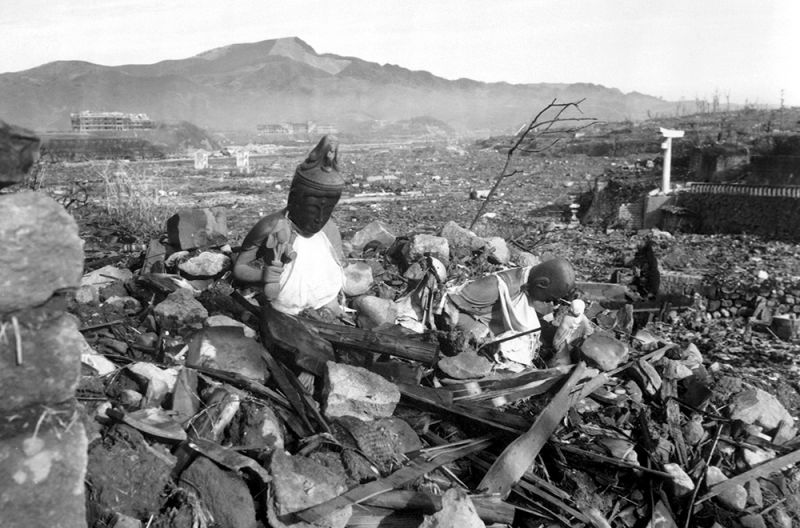
Due to a pump failure on board Bockscar, the crew did not have access to 600 gallons of fuel for the return flight, and they were unable to reach Tinian. Instead, they diverted to Okinawa and made an emergency landing on the busy airfield, firing flares to alert the controllers of their critical situation. With engines shutting down from fuel starvation, Bockscar came to a stop behind a Consolidated B-24 Liberator that was waiting to take off. After the second atomic bombing, the Japanese government finally capitulated on August 15. Had they not done so, the Americans were prepared to drop a third bomb, perhaps on Tokyo, in the coming weeks. The official surrender ceremony that ended the Second World War was held on board the battleship USS Missouri (BB-63) in Tokyo Bay on September 2, 1945. World War II had finally come to an end, and the world had been forever changed.
Short Takeoff
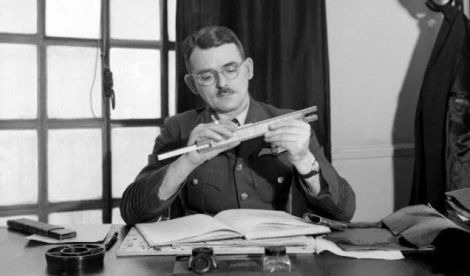
August 9, 1996 – The death of Sir Frank Whittle. Born in 1907, Whittle was an engineer who served with the Royal Air Force in WWII and is given credit for inventing the turbojet engine (Germany’s Hans von Ohain, who worked independently from Whittle, receives credit for the first operational jet engine). Following work on development of the motorjet concept, Whittle’s breakthrough came when he replaced the motorjet’s piston engine with a turbine and patented the concept in 1930. However, the British government saw little value in Whittle’s engine, so he formed Power Jets Ltd. to develop the engine on his own. By 1940, the Air Ministry finally placed a contract with Whittle to mount his engine in the Gloster E.28/39 test aircraft, which first flew on May 15, 1941, and then the Gloster Meteor, the Allies’ only operational jet fighter of WWII. Following the war, Whittle worked in the British aviation industry and taught at the US Naval Academy.
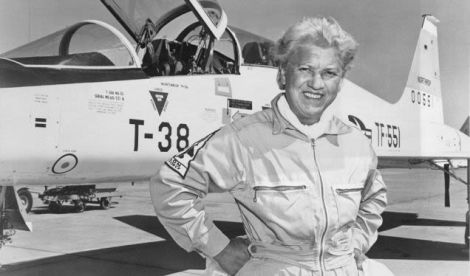
August 9, 1980 – The death of Jaqueline “Jackie” Cochran. Cochran was born on May 11, 1906 in Muscogee, Florida and learned to fly after just three weeks of instruction. In the 1930s, Cochran was the only woman to compete for the Bendix Trophy, won five Harmon Trophies, and still holds more speed, distance and altitude records than any other pilot, male or female. During WWII, Cochran helped establish the Women Airforce Service Pilots (WASP), in which women pilots were trained to ferry military aircraft in the US to free up male pilots for war duty. After the war, Cochran continued setting records in jet aircraft and, in 1953, she became the first woman to break the sound barrier while piloting a Canadair Sabre. She was also the first woman to land and take off from an aircraft carrier. Cochran died in 1980 at the age of 74.
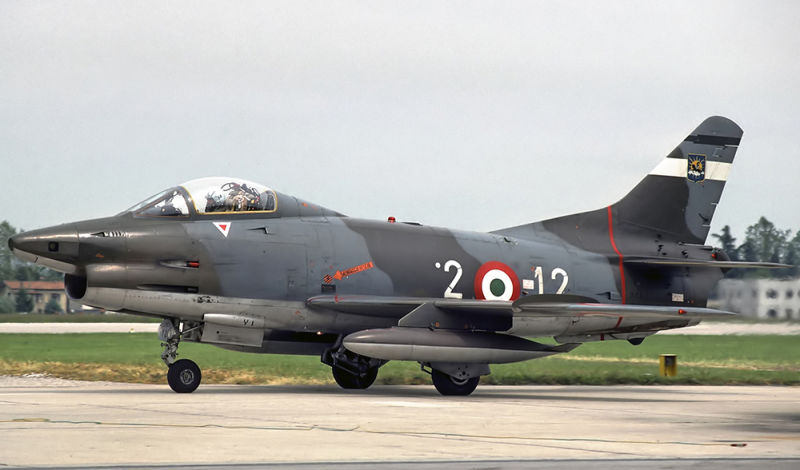
August 9, 1956 – The first flight of the Fiat G.91, a fighter-bomber designed to provide a standard lightweight strike aircraft for NATO as part of the NATO Basic Military Requirement No. 1 in 1953. Designed as a tactical ground support aircraft following experience gained in the Korean War, the G.91 was powered by a single Bristol Siddeley Orpheus 803 turbojet and had a maximum speed of 668 mph. It was armed with either four .50 caliber machine guns or two 30mm cannons in Luftwaffe service, and external hardpoints could accommodate up to 1,500 pounds of external stores including rockets, bombs, external drop tanks. The G.91 entered service with the Italian Air force in 1958, followed by West Germany, Italy, and Portugal. The G.91 also served as the platform for the Italian Frecce Tricolori demonstration squadron from 1964-1981. A total of 770 were built, and the type was retired by Italy in 1995.
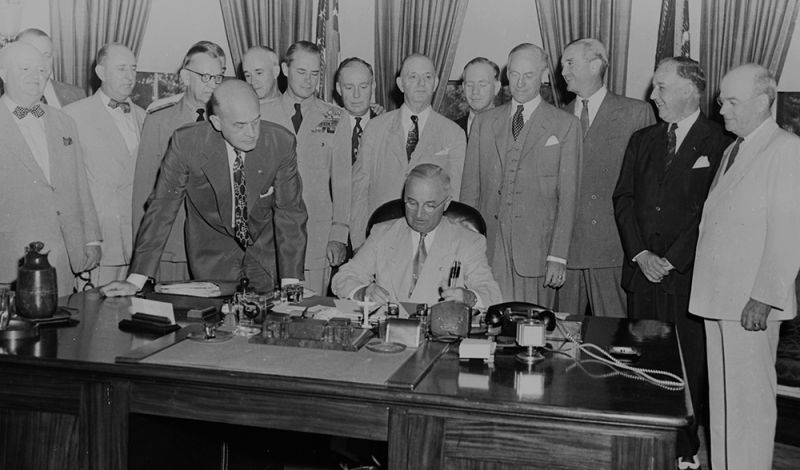
August 10, 1949 – President Harry Truman signs the National Security Act of 1947. Following WWII, the military and intelligence services of the United States underwent significant restructuring. The National Security Act split off the flying branch of the US Army to create the Department of the US Air Force and the US Air Force, ensured the continuation of the US Marine Corps as a separate branch inside the Department of the Navy, and created what was known as the National Military Establishment (later renamed Department of Defense) under the civilian control of the Secretary of Defense. To advise the Secretary of Defense, the act created the Joint Chiefs of Staff, and also created the National Security Council (NSC) and the Central Intelligence Agency (CIA), which replaced the military Office of Strategic Services (OSS) with a civilian intelligence organization.
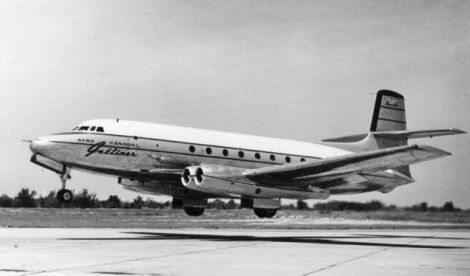
August 10, 1949 – The first flight of the Avro Canada C102 Jetliner, the world’s second jet-powered airliner. The C102 took its first flight just 13 days after the de Havilland Comet, and while it appeared that the Jetliner would prove to be a successful design, de Havilland Canada chose instead to focus their efforts on the production of their CF-100 Canuck interceptor. American billionaire Howard Hughes approached de Havilland and asked them to build 30 for him, but the company refused, nor would they allow Hughes to produce the Jetliner in the US under license. A second, nearly completed prototype was scrapped, and the flying prototype was broken up in 1956. Despite a promising life cut short, the C102 did give the world one lasting legacy: the word jetliner. Coined by Avro Canada for the C102, jetliner has since become the generic word for any large, jet-powered commercial transport.
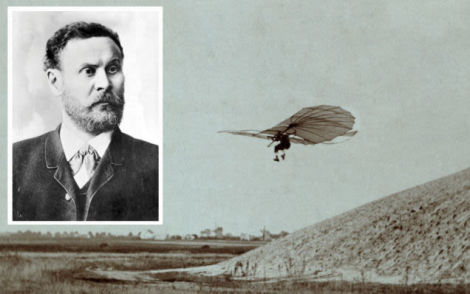
August 1o, 1896 – The death of Otto Lilienthal, an early and influential pioneer of manned flight who was known as the Glider King for his experiments with, and development of, unpowered glider flight. Born on May 23, 1848, Lillienthal worked closely with his brother Gustav and made over 2,000 flights beginning in 1891, some of which covered distances of more than 800 feet. While all those flights only accounted for five hours of total flying time, Lillienthal’s influence on the history of manned aviation far outstripped his hours in the air. The notoriety he garnered not only popularized the idea of future powered flight, but also influenced the early work of the Wright Brothers and other aviation pioneers. Lillenthal was killed in the crash of one of his gliders when he entered an unrecoverable stall at an altitude of about 50 feet. He suffered a broken neck when his glider plummeted to the ground.

August 11, 2003 – The Spirit of Butts’ Farms becomes the first model airplane to cross the Atlantic Ocean. Built by retired metallurgist Maynard Hill, the homemade airplane, measuring 74 inches long and with a wingspan of 72 inches, was launched from Cape Spear, Newfoundland, the easternmost point in North America, and landed at Mannin Beach near Clifden, Ireland after completing a flight of 1,881 miles in just under 39 hours. The model was fueled before takeoff with 118 ounces of Coleman lantern fuel, and had a mere 1.5 ounces left when it reached Ireland, enough for just 44 more minutes of flight. The flight set Fédération Aéronautique Internationale-recognized records for both time aloft and distance.
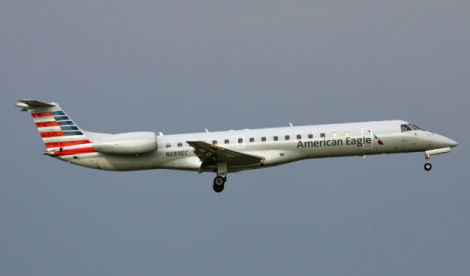
August 11, 1995 – The first flight of the Embraer ERJ-145, the largest of a family of commuter airliners that includes the ERJ 140 (up to 44 passengers) and the ERJ 135 (up to 37 passengers). With accommodation for 50 passengers, the ERJ 145 was developed as a faster and more comfortable alternative to the turboprop regional airliners in service at the time. The ERJ 145 is owered by a pair of Rolls-Royce AE 3007 high bypass turbofan engines, has a maximum cruising speed of about 515 mph, and the XR long-range variant can travel up to 2,000 nautical miles. More than 900 have been produced since 1989.
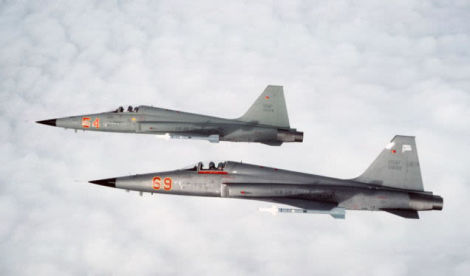
August 11, 1972 – The first flight of the Northrop F-5E Tiger II, an upgraded version of the Northrop F-5A Freedom Fighter and winner of the International Fighter Aircraft competition in 1970. In an effort to make the F-5A more competitive with the Soviet Mikoyan-Gurevich MiG-21, Northrop lengthened and enlarged the F-5A to provide room for more fuel and improved avionics, and fitted more powerful General Electric J85 engines for increased speed. The wing area was also increased by the addition of larger leading edge extensions for better maneuverability. Where the F-5A/B had no radar in an effort to save money, Northrop equipped the F-5E with an Emerson Electric AN/APQ-153 radar. Almost 1,400 F-5E/Fs were built, and they saw extensive service with American allies. The F-5E was tested in combat by the US Air Force in 1965 during Operation Skoshi Tiger, which gave the the sleek fighter its nickname, but the Tiger II never entered regular service with the USAF. However, it does serve in the aggressor role for US combat flight training in the hands of both military and civilian pilots.

August 11, 1955 – The first flight of the Bell XV-3. Though not the first tiltrotor aircraft, the Bell XV-3 verified the tiltrotor concept and eventually completed 110 successful transitions from vertical to horizontal flight and back to hover. The XV-3 was powered by a single Pratt & Whitney R-985 Wasp Junior radial engine located in the fuselage which turned a pair of two-bladed rotors (the prototype had a three-bladed rotor) through a drive assembly that could rotate through 90 degrees. While only two aircraft were built, data from the XV-3 program was used to develop the Bell XV-15, which then paved the way for the Bell Boeing V-22 Osprey tiltrotor in service today.
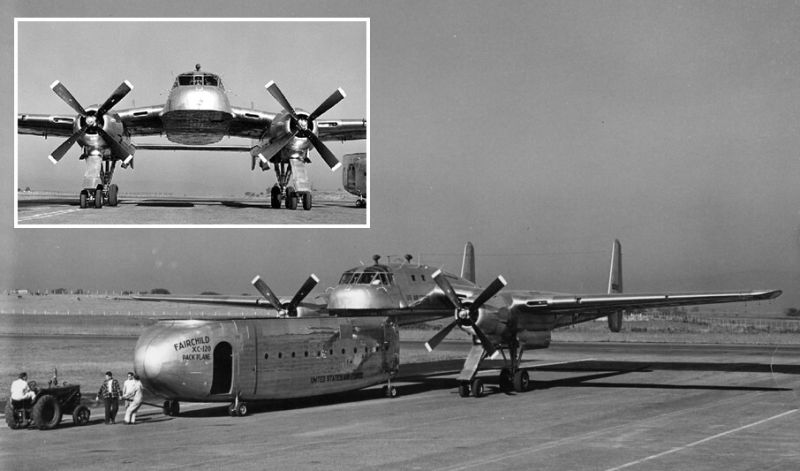
August 11, 1950 – The first flight of the Fairchild XC-120 Packplane. Developed from the successful Fairchild C-119 Flying Boxcar cargo aircraft, the Packplane was intended as a cargo aircraft that would carry a detachable modular cargo compartment. The concept would allow cargoes to be prepackaged for shipment and deposited at their destination, rather than have the entire aircraft wait on the ground for loading or unloading. Though the Air Force made numerous flights with the prototype XC-120, the design was never adopted, and the Air Force instead selected the more traditional C-119. Only a single Packplane was built, and it was eventually scrapped after the cancelation of the program in 1952.
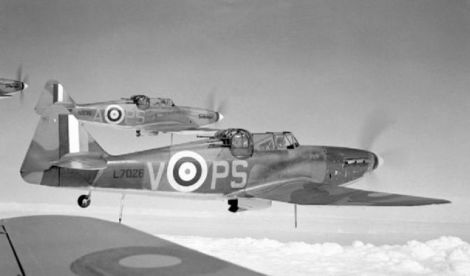
August 11, 1937 – The first flight of the Boulton Paul Defiant, a “turret fighter” interceptor developed for the RAF just prior to the outbreak of WWII. At the time, the RAF envisioned waves of unescorted German bombers flying over England, and the turret fighter concept would allow the pilot to focus on flying below or alongside the bomber while the gunner, along with other Defiants, concentrated the firepower of four M1919 Browning .303 caliber machine guns on the bomber (the aircraft had no forward firing guns). In practice, the Defiant proved to be vulnerable to more maneuverable escort fighters such as the Messerschmitt Bf 109, and it was eventually converted to a night fighter before being replaced in the interceptor role by the de Havilland Mosquito. The Defiant was then used for gunnery practice and as a target tug. Just over 1,000 were built, and it was retired at the end of the war.
Connecting Flights
If you enjoy these Aviation History posts, please let me know in the comments. You can find more posts about aviation history, aviators, and aviation oddities at Wingspan.